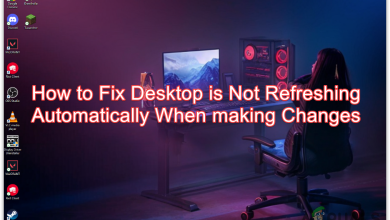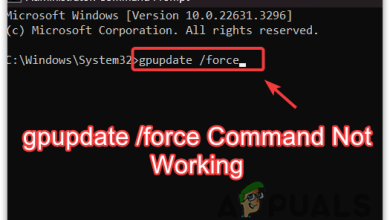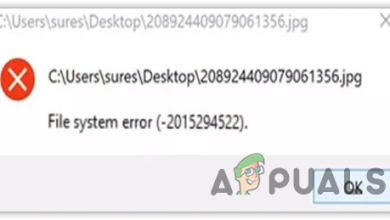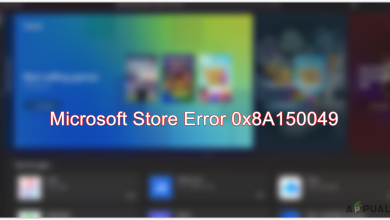Fix: Cant Eject External Hard Drive on Windows
Some users have reported that they are not able to safely eject their external hard drive like USBs etc. This issue is often caused by other processes that are using the contents of the drive or Windows USB drivers which prevent the removal of the external drive. Users have reported that they cannot eject their hard drive using the ‘Safely Remove Hardware and Eject Media’ option which is located on the bottom-left side of the taskbar.
To ensure the safety and integrity of your external hardware, it is always advised to remove your drive only when there is no other process using it. Your drive will most likely get corrupted or damaged if you recklessly eject the drive. Nonetheless, to help you fix your problem, you can follow the solutions down below.

What stops Users from Ejecting their External Drive Safely on Windows 10?
If you are not able to safely eject your external drive and the ‘Safely Remove Hardware and Eject Media’ option is greyed out, the issue is typically due to the following factors —
- Contents of the drive are being used. If the background processes or applications are using the files stored on the external drive, it can cause the issue.
- Windows USB drivers. Sometimes, the obsolete or malfunctioning USB drivers on your system can be causing the hiccup.
To circumvent your issue, please follow the solutions down below in the same order as provided.
Solution 1: Restart your System
The first step in solving your issue would be to reboot your machine. Rebooting your machine will close all the current applications and third-party processes and when the system boots up again, there will be no applications using the files stored on the external hard drive. You can also end such tasks by using the Task Manager, however, that is time-consuming and since a restart is much quicker and efficient, you should restart your system instead of ending the tasks using the Task Manager. Once your system has booted up again, try ejecting the external drive.
Solution 2: Checking the Hard Drive policy
If you can’t see any “Eject” option on your Windows. It means that your Windows is preventing the Hard Drive to be ejected as it might be in the middle of an operation. So Windows doesn’t let you remove the Hard Drive if it thinks that there is a danger of data loss. You can change the policy Windows set for your hard drive by following these steps:-
- Hold the Windows Key and Press X. Choose Device Manager.
- Now expand the “Disk Drives” section then find the Drive you want to eject.
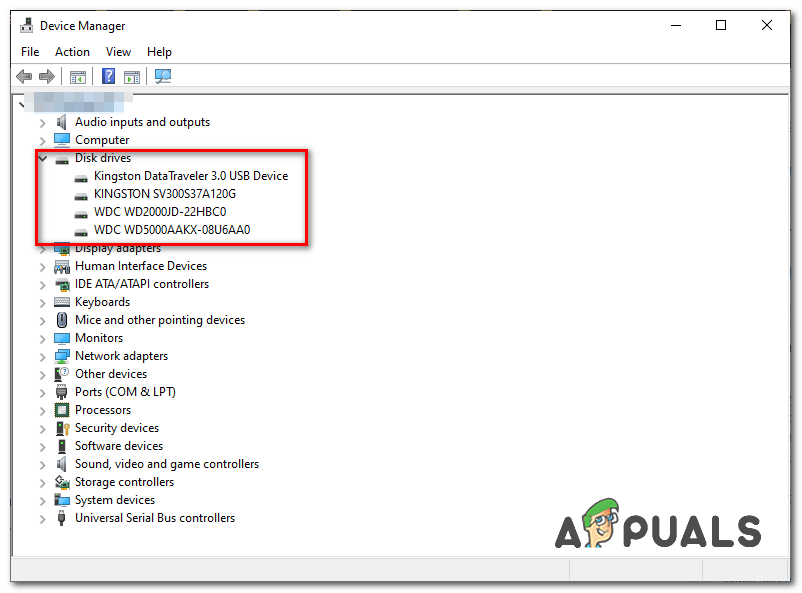
Selecting New Policy - Right-click on the drive you want to eject and click “Properties”.
- Head over to the “Policies” tab and make sure to select “Better Performance”.
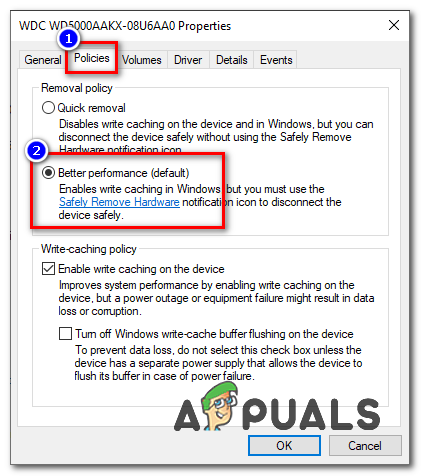
Selecting Policy - Now simply restart your computer and check if you have the option to eject the drive.
Solution 3: Using Safely Remove Hardware utility
There is a shortcut that you can use to access the old “Safely Remove Hardware” tool Windows have. Basically, it will open the whole utility and let you eject the External Hard drive easily. To access this utility, follow these steps:-
- Press and hold the “Windows + R” keys together to open the Run program.
- Now type this shortcut and press enter:-
RunDll32.exe shell32.dll,Control_RunDLL hotplug.dll

Accessing the Utility - It should bring up the Safely Remove Hardware utility for you.
- Now simply select the drive you want to eject and click “Stop”.

Safely Remove Hard drive - Check to see if the issue persists.
Solution 4: Run the Windows Hardware and Devices Troubleshooter
The built-in troubleshooters are there for a reason and should be utilized whenever needs be. In this case, since you are having issues with your external hardware, executing the Hardware and devices troubleshooter might fix your issue. Here’s how to run the troubleshooter:
- Press Windows Key + I to open Settings.
- Go to Update and security.
- Navigate to the Troubleshoot panel.
- Scroll down and locate ‘Hardware and devices’.
- Select it and click ‘Run the troubleshooter’.
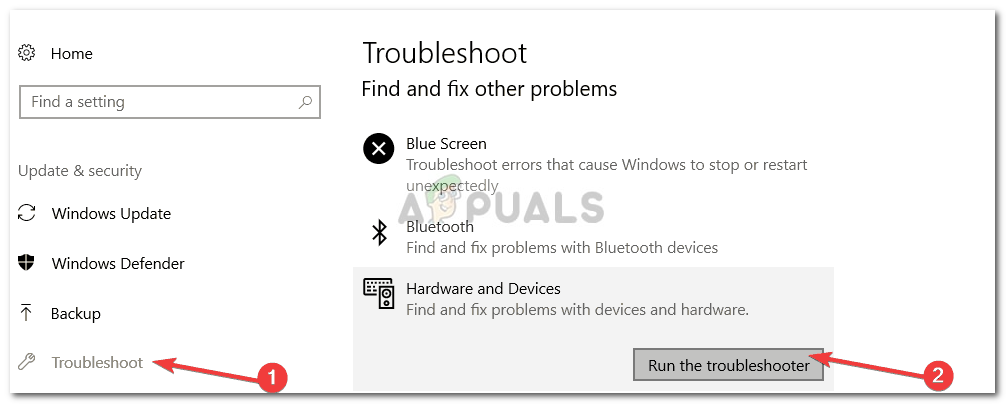
Running the Hardware and Devices Troubleshooter
Solution 5: Eject the Drive Using Disk Management
Disk Management is a Windows built-in utility that lets you manage all the disks or drives connected to your system. If you are unable to eject the drive using the ‘Safely Remove Hardware and Eject Media’ option, you can easily remove the drive safely using the Disk Management tool. Here’s how to do it:
- Go to the Start Menu, type in Disk Management and hit Enter.
- Locate the external hard drive that you want to eject.
- Right-click on your external hard drive and select ‘Eject’.
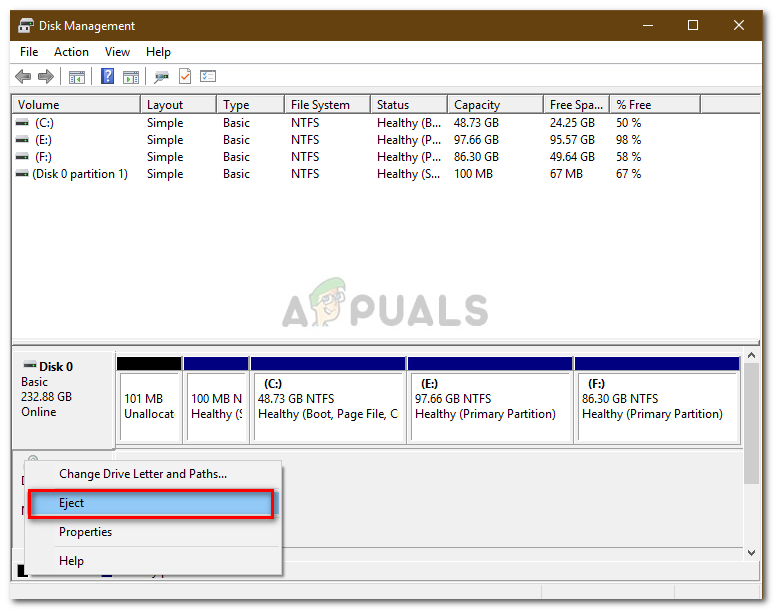
Ejecting External Drive using Disk Management
Note:
It is important to note that once you eject the external hard drive, it will appear as Offline. Therefore, the next time you want to use the drive on your system, make sure to change the status to Online in Disk Management.
Solution 6: Update USB Drivers
The last step in solving this issue would be to check your USB drivers using the Device Manager. To fix your issue, you will have to see if the drivers are operating properly or not. Here’s how to do it:
- Go to the Start Menu, type in Device Manager and open it up.
- Expand the Universal Serial Bus controllers list.
- Check if there’s an entry with a yellow exclamation mark. If there is, right-click on it and select ‘Update Driver Software’.
- If there’s no exclamation mark, uninstall the driver and restart your system so that it can be installed again automatically.

Uninstalling USB Driver

